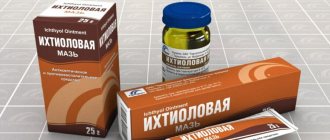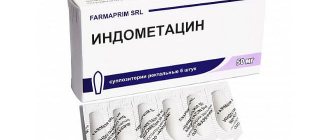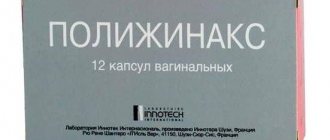Among natural antimicrobial drugs, a special place should be given to chlorophyllipt oil, which doctors prescribe for the treatment of sinusitis, stomatitis, upper respiratory tract infections and some gynecological diseases. The drug has antibacterial activity, has antiseptic and anti-inflammatory properties. The solution is based on sunflower or olive oil, and the base is eucalyptus extract. It is sold in bottles and is a clear emerald liquid.
Pharmacological properties of the drug Chlorophyllipt
Chlorophyllipt belongs to the pharmacotherapeutic group of antiseptic drugs. The drug has an antibacterial (bactericidal and bacteriostatic) and etiotropic effect against resistant and sensitive staphylococci to antibiotics. It has the ability to eliminate plasmids of resistance of various bacterial pathogens to antibiotics, increases the oxygen content in tissues, and has a pronounced detoxifying effect, therefore the drug is used in conditions of reduced natural defenses of the body, as a means of combating tissue hypoxia and to increase the effectiveness of antibacterial drugs used. An experimental study of chlorophyllipt revealed the tropism of this drug for lung tissue, and the absence of any carcinogenic, mutagenic, teratogenic and embryotoxic effects. The bactericidal concentration of chlorophyllipt in the blood is created by the simultaneous intravenous administration of 8 ml of a 0.25% solution, the bacteriostatic concentration is created by 4 ml of a 0.25% solution. The therapeutic concentration lasts for an average of 6 hours; the optimal dose is to administer the drug 4 times a day.
Chlorophyllipt oil - instructions for use
This drug is a liquid of plant origin, made from an extract of eucalyptus leaves. It contains chlorophylls A and B. The medicine based on them is an excellent antiseptic and has high activity against antibiotic-resistant staphylococci. The drug is completely natural, so it is allowed even for children and pregnant women.
Compound
The drug is presented as a solution of an oily liquid. The main active ingredient in it is eucalyptus extract with a concentration of 20 mg/ml. Additional components are corn, olive, olive or sunflower oil. Every manufacturer uses one of these. Eucalyptus essential oil contains organic acids, tannins, selenium, zinc, manganese and a number of other trace elements that provide beneficial, including antibacterial, properties of this medicine.
Release form
An oil solution of chlorophyllipt is one of the forms of the drug based on eucalyptus leaves. At the pharmacy, the medicine can be found in dark glass bottles. The volume of each is 20 ml. An oil solution is used as an alternative to an alcohol solution. Such a replacement is necessary if for some reason drugs with alcohol are contraindicated. In addition, an alcohol solution cannot be used internally, unlike an oil solution, but when used externally, the latter lasts longer on the affected area. In the pharmacy you can find Chlorophyllipt spray.
Pharmacodynamics and pharmacokinetics
Pharmacokinetic studies of the drug have not been conducted. The medicine is an extract from a mixture of leaves of blue or globular eucalyptus. They have an etiotropic and antibacterial effect against staphylococci, including even antibiotic-resistant strains. Eucalyptus extract is able to increase the concentration of oxygen in tissues and has a detoxifying effect. This allows the drug to be used in cases of reduced natural immunity and hypoxia. It further increases the effectiveness of antibacterial therapy.
Indications for use
Chlorophyllipt is used in a variety of fields of medicine. The medicine is prescribed for the treatment of inflammation of the tonsils (tonsillitis), diseases of the oral cavity and nasopharynx, burn disease and many other pathologies. The list of indications for use also includes:
- sphincteritis;
- inflammatory skin diseases;
- purulent wounds and abrasions;
- acne;
- non-healing ulcers;
- erysipelas;
- haemorrhoids;
- rectal erosion;
- ulcerative colitis;
- stomach ulcer;
- cervical erosion;
- ethmoiditis;
- pharyngitis;
- laryngitis;
- post-abortion sepsis;
- purulent runny nose.
Contraindications
This drug is a completely natural remedy, so it has very few contraindications. The oil form is allowed even for pregnant women and children. In general, chlorophyllipt is contraindicated in:
- hypersensitivity to the components of the drug;
- individual intolerance to eucalyptus leaf extract or any other component of the drug.
Indications for use of the drug Chlorophyllipt
Staphylococcal septic conditions (postpartum, postoperative, postinfectious), purulent-inflammatory and postoperative complications of staphylococcal etiology: with burn disease, staphylococcal endocarditis, pneumonia, lung abscess, pleurisy, peritonitis, osteomyelitis, para- and metroendometritis, post-abortion sepsis, as well as acute and subacute inflammatory diseases of the internal genital organs not associated with childbirth or abortion, purulent-destructive forms of pyelonephritis and urosepsis (as part of complex therapy). For diseases caused by non-staphylococcal antibiotic-resistant pathogens (in particular for the treatment of erysipelas, tuberculosis of various localizations, listeria infection). Diseases of the upper respiratory tract (tonsillitis, pharyngitis, laryngitis), as well as aphthous and ulcerative stomatitis.
special instructions
Regardless of what disease needs to be treated, you should consult a doctor before starting. Then you need to conduct a sensitivity test to the drug. To do this, it is recommended to drink 25 drops of chlorophyllipt, diluted with a tablespoon of water. Then wait 6-8 hours. If signs of allergy do not appear, for example, swelling of the lips or swelling of the throat mucosa, then the medicine can be used. When treating burns and wounds, it is recommended to alternately use oil and alcohol solutions.
During pregnancy
The use of oil chlorophyllipt during pregnancy is possible only under the supervision of a doctor. The specialist evaluates how much the therapeutic effect of the drug outweighs the potential risk for the mother and child. If there are more benefits from chlorophyllipt, then the doctor may include it as an additional agent in the main therapy. In gynecology, the drug is used to treat acute inflammatory diseases not associated with childbirth or abortion.
In childhood
The instructions for use of oil chlorophyllipt do not contain clear recommendations for the use of the medicine in children. The manufacturer only reports that there is no experience in using the product in pediatrics. Taking into account the small number of contraindications and good tolerability, the oil solution is still used in the treatment of children, because the alcohol form is prohibited for them. In newborn babies, it is indicated for treating the umbilical wound as an alternative to brilliant green.
Pediatricians recommend this natural remedy when a pustular rash occurs in infants and to prevent inflammatory reactions as a result of pathogenic bacteria entering the bloodstream. For older children and adolescents, chlorophyllipt is used to treat wounds and abrasions, and to treat a runny nose. Other indications for use:
- lubricating the throat when treating a sore throat or cold;
- the need for treatment with antibacterial drugs as an alternative;
- resistance to antibiotics with reduced immunity.
Drug interactions
The active components of chlorophyllipt, when taken with other antiseptics, enhance the effect of the latter. For this reason, the medicine is more often prescribed in complex therapy. Chlorophyllipt does not affect the use of other medications. It is not recommended to drink alcohol during treatment. Judging by the reviews, this leads to a significant decrease in the effectiveness of the use of chlorophyllipt.
Side effects and overdose
The only side effect of the drug is a hypersensitivity reaction. It intensifies when the dosage of the drug is exceeded and is manifested by the following symptoms:
- swelling of the mucous membranes;
- redness;
- difficulty breathing;
- rashes;
Terms of sale and storage
Chlorophyllipt oil can be bought in a pharmacy without a doctor's prescription. It should be stored at a temperature no higher than 20 degrees. The shelf life of the product is 2 years.
Use of the drug Chlorophyllipt
Chlorophyllipt solution is prescribed intravenously (slowly) for septic conditions, burn disease, pneumonia. 2 ml of 0.25% alcohol solution of the drug is diluted with 38 ml of sterile isotonic sodium chloride solution (that is, 20 times). The drug is prepared ex tempore . The solution should be transparent, without flakes. The prepared solution is administered intravenously at a dose of 40 ml 4 times a day every day for 4–5 days. For peritonitis and pleural empyema, every day for 5–8 days. It is introduced into the cavity through a drainage tube (0.25% alcohol solution is diluted in a ratio of 1:20 with 0.25% procaine solution). Prepare the drug ex tempore . In the form of tablets, 12.5 mg or 25 mg are used, depending on the severity of the pathological process. The tablets are kept in the mouth until completely dissolved. The daily dose for adults is 25 mg (1 tablet) 5 times a day. Frequency of administration: 1 tablet every 4–5 hours. Course of treatment: 7 days. Oral Chlorophyllipt solution is used for carriage of staphylococci in the intestines and for the prevention of postoperative complications. Adults take 5 ml of 1% alcohol solution, diluted with 30 ml of water, 3 times a day 40 minutes before meals. When carrying staphylococci in the intestines, Chlorophyllipt is also prescribed as an enema (20 ml of 1% solution is diluted in 1 liter of water - the dose for one enema). The procedure is carried out once a day. An enema with the drug is given every 2 days. The course of treatment consists of 10 procedures. For local use (treatment of burns and trophic ulcers), 1% solution is diluted in a ratio of 1:5 with 0.25% procaine solution. When treating cervical erosion, all folds of the vaginal mucosa and the vaginal part of the cervix are first dried with a tampon and the cervical canal is lubricated with 1% Chlorophyllipt solution. To douche the vagina, 15 ml of 1% alcohol solution is diluted in 1 liter of water. The duration of treatment depends on the course of the disease and is determined by the doctor. The spray is used topically for inflammation of the upper respiratory tract (sore throat, acute respiratory diseases); for adults, inject into the pharynx with two presses on the container valve 3-4 times a day for 3-4 days. When treating erosions, trophic ulcers, burns, moisten a gauze pad with Chlorophyllipt and leave on the surface of the skin or mucous membranes for 15–20 minutes. The procedure is carried out 2 times a day. The manipulations are repeated daily for 10 days.
What gynecological diseases can be treated with chlorophyllipt?
In most cases, douching with chlorophyllipt is used to treat gynecological diseases. Douching is washing the vagina with medications or infusions from medicinal injuries. Douching can only be done as prescribed by a doctor, since you can get thrush or vaginitis - douching is a washout of both good and bad flora of the vagina. Douching for thrush deserves special attention, which should be carried out only as prescribed by a doctor with comments in each specific case. By the way, monastery tea can help with thrush; more about that here . Gynecological diseases are treated with chlorophyllipt as follows:
- For gynecological infections, she uses a 1% alcohol solution of chlorophyllipt, which actively neutralizes staphylococci and is resistant to bacteria. One tablespoon of the drug is dissolved in a liter of boiled water and douched.
- 2% oily chlorophyllipt is used to treat cervical erosion (a gynecologist lubricates a woman’s cervix with chlorophyllipt soaked in a solution).
- To treat erosion, only oil and alcohol solutions of chlorophyllipt are used. A tampon soaked in chlorophyllipt is inserted into the vagina. It is prohibited to use a spray with chlorophyllipt extract for syringing.
You can learn about other traditional medicine methods against erosion in the video:
In addition to gynecological ones, chlorophyllipt can treat other diseases.









